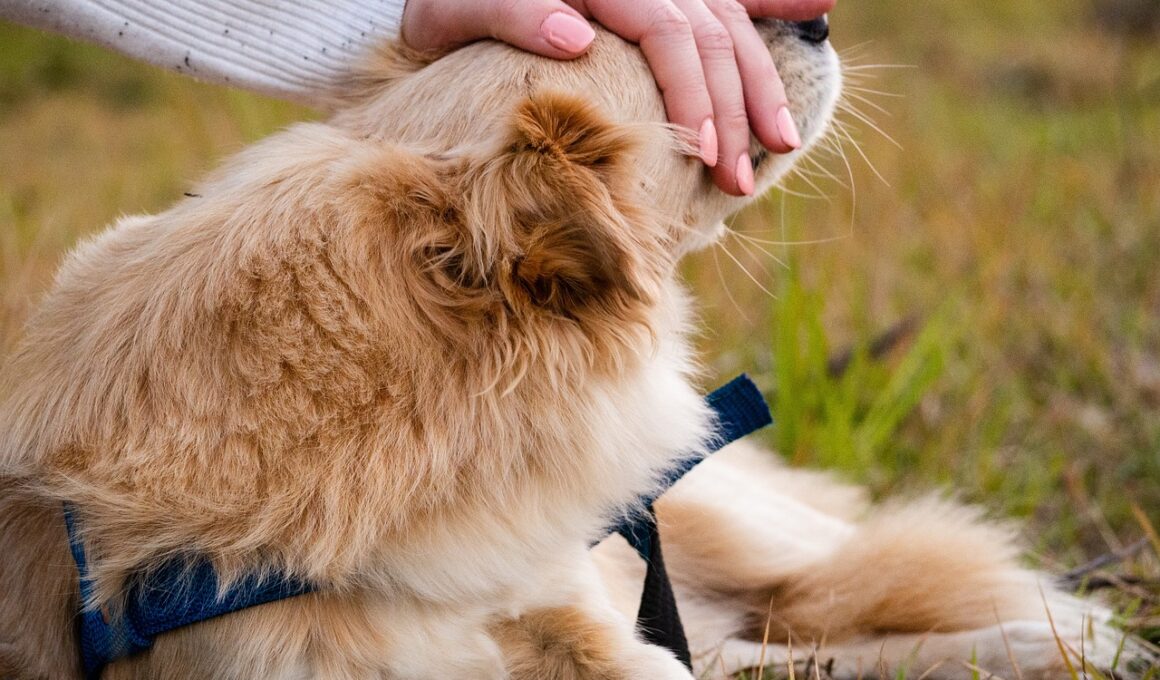Avoiding Common Mistakes in Dog Nail Care
Dog nail care is often overlooked by pet owners, yet it plays an important role in ensuring the health and comfort of your furry friend. Many owners make common mistakes when caring for their dog’s nails, which can lead to negative consequences for their pet. Understanding the basic principles of dog nail care is crucial for maintaining your dog’s overall well-being. The first step is regularly checking your dog’s nails. Ignoring them can lead to painful overgrowth, which can cause issues with walking. Make a habit of inspecting your dog’s nails, especially after outdoor activities. Additionally, choosing the right tools for nail trimming is essential. Invest in high-quality nail clippers suitable for your dog’s size and nail type. Another mistake is rushing the process. Patience is key when trimming your dog’s nails, as they may become anxious or fearful. Always reward your pet with praise or treats after each successful trim. Remember, establishing a comforting routine can significantly ease the nail care process, creating a bond between you and your pet while encouraging trust during grooming sessions.
Another common mistake in dog nail care is not understanding the quick, which is the sensitive area within a dog’s nail that contains blood vessels and nerves. Cutting into the quick can lead to pain and excessive bleeding. To avoid this, familiarize yourself with your dog’s nail structure. Light-colored nails make it easier to see the quick, while dark nails can be more challenging. If you are unsure, consult your veterinarian for guidance. When trimming dark nails, consider using a nail grinder, as it provides more control and reduces the risk of cutting the quick. It is essential to stay calm and composed during the process because your dog can sense your anxiety. If your dog becomes agitated or scared, take a break and try again later. Preparing your dog for nail care can be beneficial as well. Gradually introduce nail care tools and establish positive associations by rewarding your dog with treats or toys. Early education allows your dog to develop a sense of comfort during nail trims and reduces stress for both you and your pet in the long run.
Frequency of Nail Trimming
The frequency of nail trimming is another aspect that some pet owners miscalculate. It is essential to establish a regular schedule based on your dog’s activity level and nail growth. Active dogs, particularly those that go outdoors frequently, may naturally wear down their nails, while less active dogs need more frequent trims. As a general rule, aim to trim your dog’s nails every two to four weeks, depending on their activity level and growth rate. To maintain a healthy routine, monitor your dog’s nails regularly and adjust the schedule as necessary. For some breeds, the growth rate of nails can be slow, making it necessary to track changes over time. In addition to trimming, also consider the paw pads and between the toes, as debris can accumulate in these areas as well. Keeping these areas clean prevents discomfort and infections. Always be on the lookout for any signs of discomfort or issues with your dog’s nails, and if you notice anything unusual, consult a veterinarian to prevent more serious problems later.
Using the wrong technique is another mistake that can lead to problems during nail care. Many owners apply pressure incorrectly, leading to fractures or splintering of the nail. When trimming nails, it is crucial to use smooth, steady strokes instead of pressing down hard. Aim for small increments, taking the time to acclimate your pup to the nail care process. Also, avoid distractions, as a calm environment helps both you and your dog feel at ease. If your dog exhibits anxiety during nail trimming, take a break and try again later. Always start with the nails that are least stressed and gradually work your way up to the more anxious ones. If you aren’t confident in your trimming skills, consider seeking professional assistance until you gain the necessary experience. Remember that regular practice can help you enhance your technique, making the process smoother for you and your furry friend. Keeping it fun and rewarding fosters a cooperative spirit in your dog, making the experience less stressful for both parties.
Post-Trimming Care
After successfully trimming your dog’s nails, post-trimming care is essential to ensure comfort and proper healing. Often overlooked, this aspect of nail care is vital for the overall health of your dog’s paws. Check for any rough or jagged nail edges, as these can cause discomfort. If necessary, use a nail file or grinder to smooth any sharp edges that may scratch surfaces or hurt your pet. Additionally, observe your dog’s paws for any signs of stress or discomfort. Remember that aftercare is a crucial point in your dog’s grooming routine. Ensure your dog has a clean, comfortable area to rest after grooming sessions, allowing the nails to acclimate to their new length. Continuing to reward your dog with praise or treats reinforces positive behavior during future grooming sessions. It is important to maintain the paw’s hygiene as well. Ensure that any debris or dirt is washed away and dried properly after trimming. This reduces the risk of infections, keeping your dog’s paws healthy and clean.
Another mistake pet owners make is neglecting the importance of regular vet check-ups. During these visits, your veterinarian can assess the overall health of your dog’s nails and paws. A routine check-up allows you to address any ongoing nail problems, including potential issues like infections or abnormalities. Your veterinarian can also provide guidance on how frequently dog nail care should be addressed based on your specific breed and lifestyle. Furthermore, many owners overlook the need for professional help when necessary. If at any point you are unsure or uncomfortable with trimming your dog’s nails, consider consulting a professional dog groomer or veterinarian. They possess the experience and tools to ensure your dog’s nails are groomed safely and correctly. Groomers can also offer additional tips and tricks for effective nail care at home. Remember that continuous learning is key to improving your dog care routine. Taking proactive steps to enhance nail care knowledge strengthens your pet-parenting abilities.
Conclusion on Dog Nail Care
In conclusion, avoiding common mistakes in dog nail care is crucial for maintaining your pet’s health. By understanding the importance of regular nail inspections, using the correct tools, and developing good techniques, you can provide a comfortable grooming experience for your dog. Establishing a consistent nail care routine, while incorporating post-trimming care and seeking professional guidance when needed, contributes to the overall well-being of your furry friend. Remember that patience and positive reinforcement will strengthen the bond between you and your dog, creating enjoyable grooming sessions. Making these efforts to educate yourself on nail care will reduce the risks associated with improper grooming practices. Your dog deserves the best, and taking the time to ensure proper nail care is a significant part of that. Embrace the learning process, and don’t hesitate to seek out resources or expert advice. With dedication and care, you will become a knowledgeable dog owner. Your furry friend will thank you for it, as a comfortable and healthy pet leads to a happy home environment!
Remember that the benefits of proper nail care extend beyond simple aesthetics. Maintaining healthy nails directly impacts a dog’s quality of life. Invest time in learning from reputable sources and continuously improve your grooming techniques. By incorporating these essential practices into your routine, you can ensure a happy and healthy life for your beloved pet.


